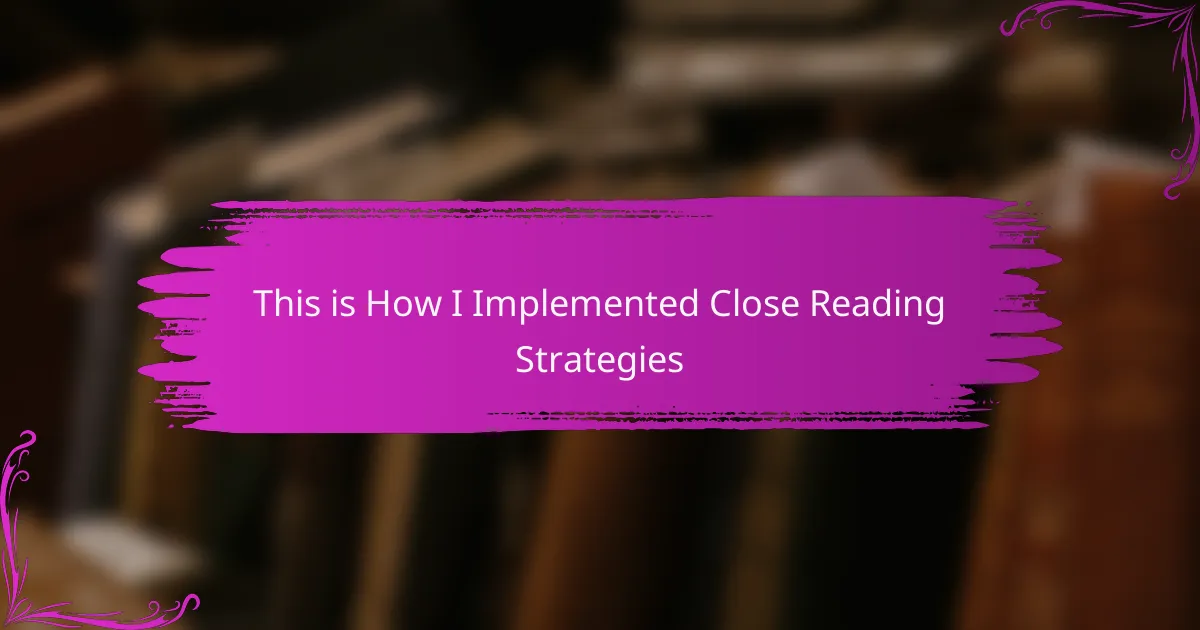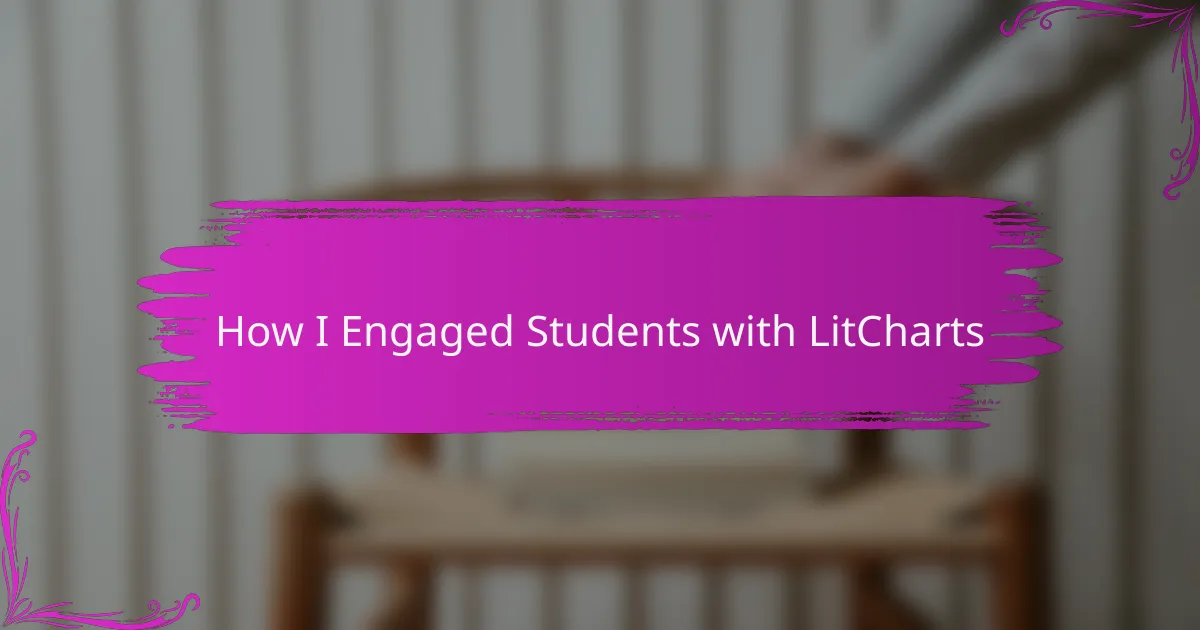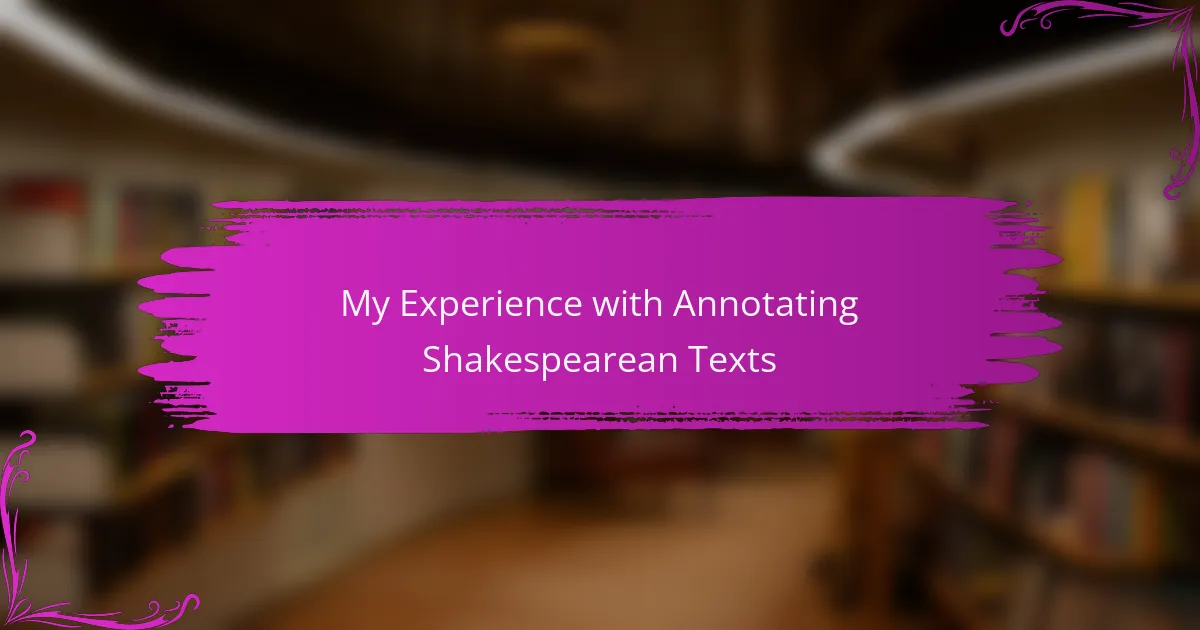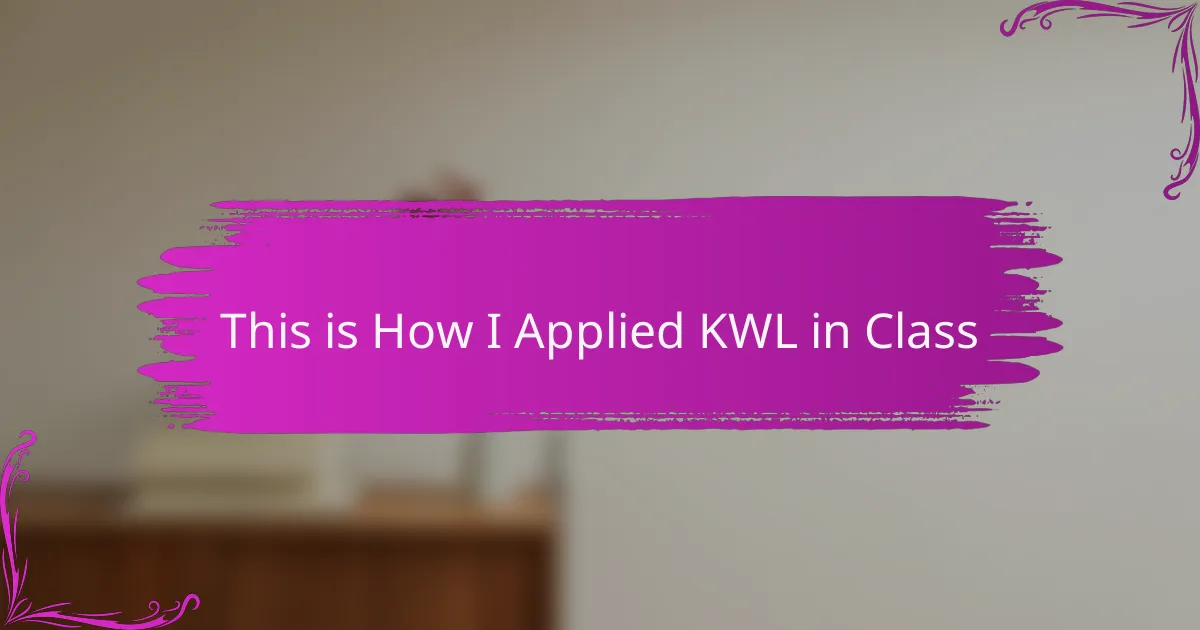Key takeaways
- Close reading enhances understanding by encouraging deep analysis of language, structure, and meaning in texts.
- Strategies like annotating, guided questions, and partner discussions foster student engagement and critical thinking.
- Digital tools and graphic organizers can improve collaborative learning and help students visualize connections within the text.
- Close reading promotes emotional connections and personal insights, enriching students’ overall literary experience.
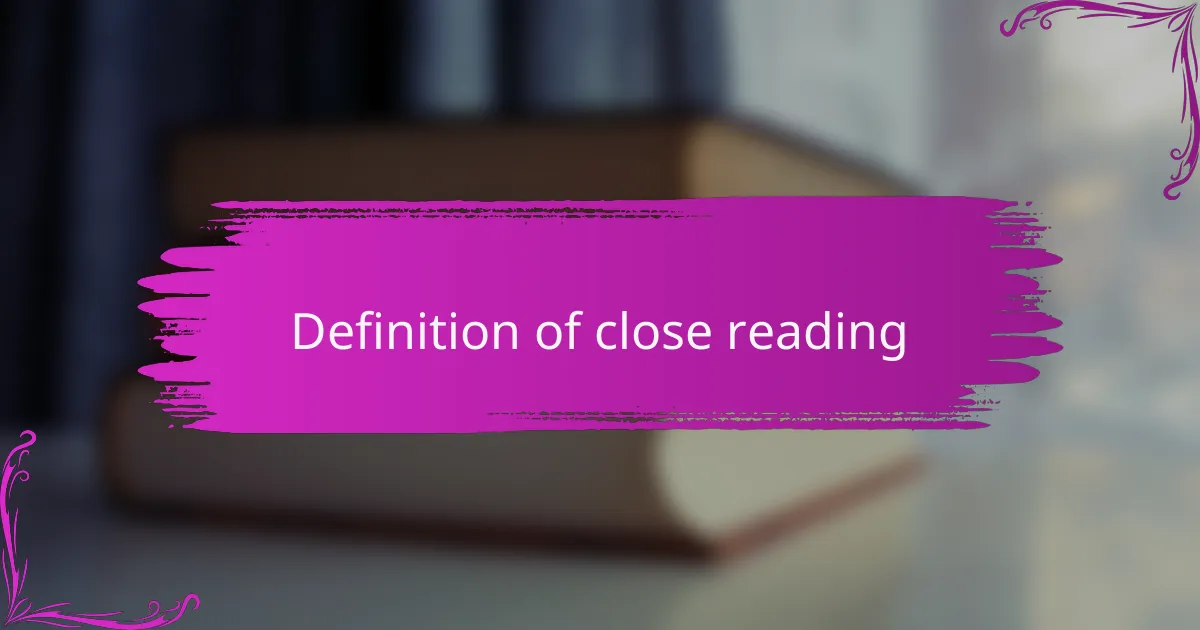
Definition of close reading
Close reading is an analytical approach to reading that encourages a deep examination of a text. It involves carefully considering the language, structure, and meaning of a piece, often focusing on individual words or phrases to uncover layers of understanding. I remember the first time I employed close reading in my classroom; it transformed the way my students engaged with literature. They began to appreciate the art of storytelling beyond just the plot, and it was rewarding to see their excitement grow as they uncovered hidden meanings.
This method emphasizes the importance of textual evidence in interpreting literature. By teaching students to ask questions and support their thoughts with direct quotes, I noticed they became more confident in their analytical skills. Here are some key aspects of close reading:
- Focus on Specific Passages: Analyze short segments of text rather than larger sections to hone in on meaning.
- Textual Evidence: Encourage students to back up their interpretations with quotes, enhancing their arguments significantly.
- Revisiting: Read the same passage multiple times to gain new insights with each read, fostering deeper understanding.
- Annotation: Engage students in marking up the text, using symbols, notes, or highlights to capture their reactions and thoughts.
- Discussion: Facilitate conversations around the text, allowing diverse viewpoints and interpretations to emerge, enriching the learning experience.
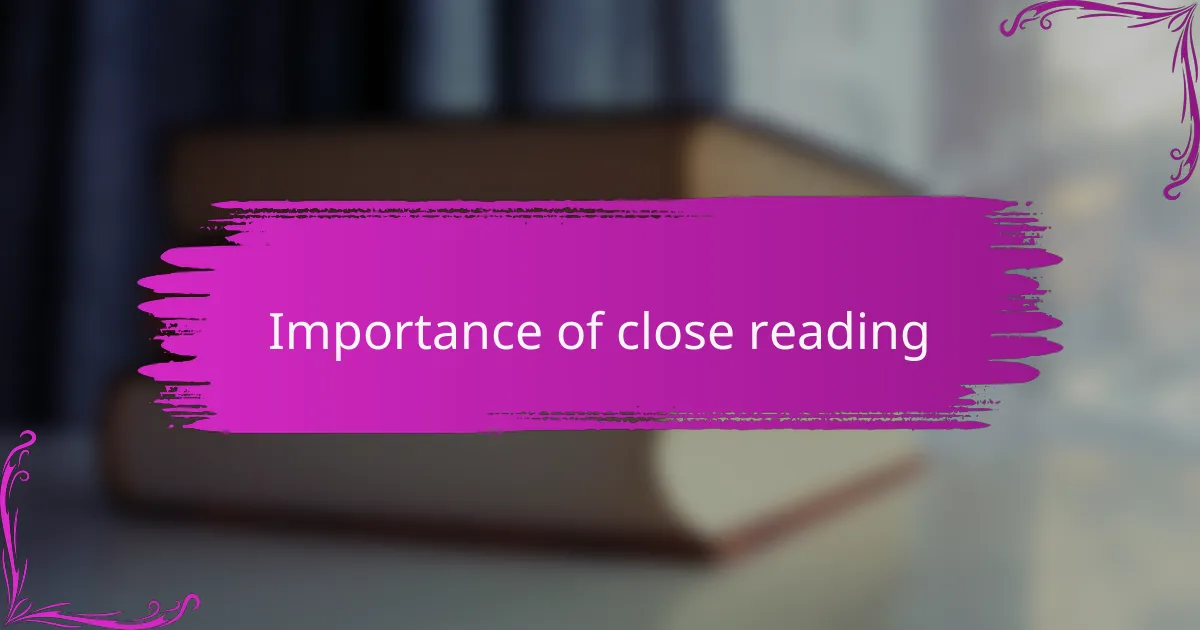
Importance of close reading
Close reading is essential in deepening our understanding of literature. It allows readers to engage with the text on a profound level, revealing layers of meaning that may be missed with a cursory glance. I’ve found that when I slow down to focus, I uncover nuances in character development and themes that truly enrich my reading experience.
From my own teaching experience, I’ve noticed that students often struggle with abstractions. Close reading helps them connect with the text emotionally. They begin to see literature not merely as a series of words but as a conversation that resonates with their lives. This transformation in perspective is both rewarding and impactful.
Now, let’s look at a comparison that illustrates the difference between close reading and surface-level reading:
| Aspect | Close Reading | Surface-Level Reading |
|---|---|---|
| Engagement | Deep engagement with themes, characters, and structure | Shallow understanding, focusing on surface details |
| Analysis | Critical analysis of language and meaning | Lack of analysis, missing important subtleties |
| Emotional Connection | Enhances emotional connections to the text | Limited emotional response, often forgettable |
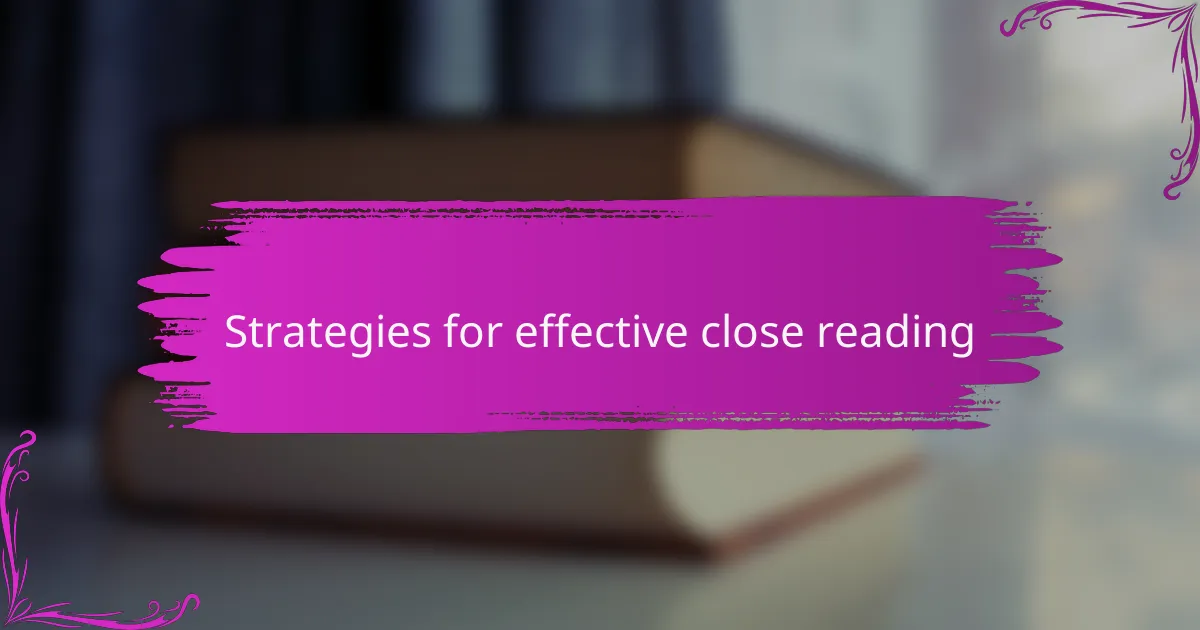
Strategies for effective close reading
When I first started using close reading strategies in my classroom, I was amazed at how much deeper my students’ understanding of the text became. One strategy I found particularly effective was annotating the text. I encouraged my students to jot down their thoughts, questions, and emotions in the margins. This not only kept them engaged but also fostered a sense of ownership over their learning.
Another effective strategy I implemented was the use of guided questions. I crafted specific questions that prompted my students to think critically about the themes, characters, and literary devices in the text. I still remember the excitement in the classroom when students connected the dots between their answers and the author’s intentions. It was as if a light bulb went off for many of them.
Incorporating partner discussions was also a game-changer. I paired students to discuss their annotations and responses to the guided questions. This collaborative approach not only built their confidence but also enriched their perspectives. Listening to their conversations, I sensed their growing passion for literature, which was incredibly rewarding.
| Close Reading Strategy | Description |
|---|---|
| Annotating the Text | Encouraging students to make notes, ask questions, and highlight key phrases directly on the text. |
| Guided Questions | Providing specific questions that lead students to deeper analysis and understanding of the material. |
| Partner Discussions | Facilitating discussion among students to share insights and perspectives on the text. |
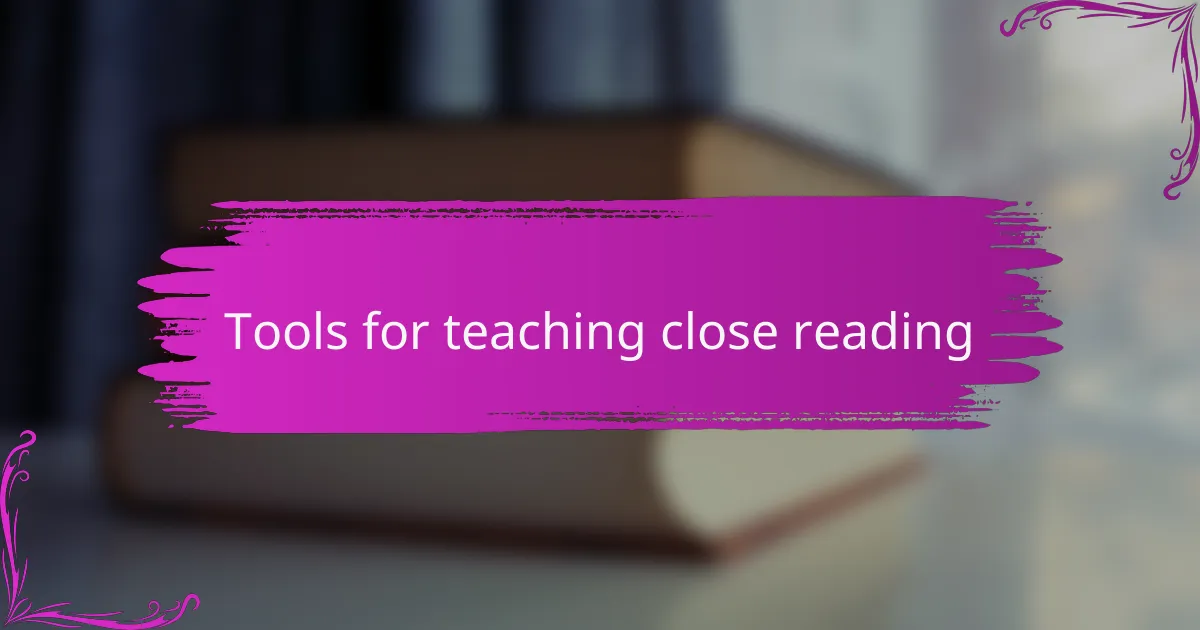
Tools for teaching close reading
When it comes to teaching close reading, I’ve found that using digital tools can really enhance engagement. For example, platforms like Google Docs allow students to annotate digitally, sharing their thoughts in real-time. I remember the first time I used this method; seeing students comment on each other’s observations fostered a collaborative spirit that sparked deeper discussions. They felt connected, and their insights flourished in this interactive environment.
Another tool I’ve enjoyed incorporating is graphic organizers. These visual aids help students map out themes, characters, and key quotes. I still recall the moment a student brought their completed organizer to class, beaming with pride over how they connected the text to their personal experiences. It was a tangible reminder of how structure could illuminate complex ideas and deepen their comprehension.
Finally, I often utilize video content that complements the texts we’re studying. Short clips or adaptations that highlight specific scenes can serve as an excellent springboard for close reading. After watching a scene, I pose questions about the choices depicted, prompting students to analyze the underlying themes. The discussions that followed were always rich; it was fulfilling to witness students drawing connections between visual media and the literary elements we explored together. This approach not only reinforces understanding but also makes literature feel more relevant to their lives.
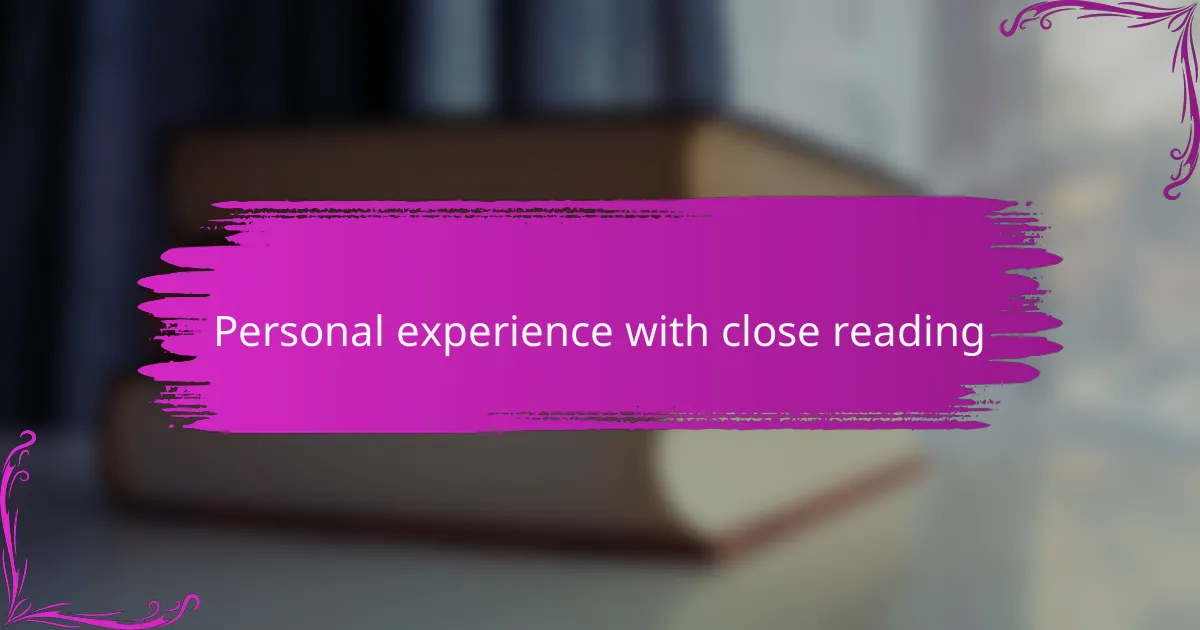
Personal experience with close reading
In my journey with close reading, I discovered it transforms how I engage with texts. Initially, I thought it’s just about reading slowly, but I quickly learned there’s so much more. By studying the nuances of word choices and sentence structures, I became more attuned to the author’s intentions and themes.
One memorable experience was while reading a poem. I went beyond the surface and delved into the imagery and symbols, and it hit me—this wasn’t just a collection of words. It felt like I was having a conversation with the poet, uncovering layers I never noticed before. I walked away feeling enriched and eager to share this approach with others.
I’ve found that the emotional connection you create with a text during close reading is unparalleled. It’s as if the words resonate on a deeper level, evoking thoughts and feelings that leave a lasting impact. Through this process, I now view literature as an active exploration rather than a passive consumption.
| Close Reading Benefit | Traditional Reading |
|---|---|
| Enhances comprehension | May miss deeper meanings |
| Fosters emotional connection | Often more surface-level |
| Encourages critical thinking | Limited analytical insights |
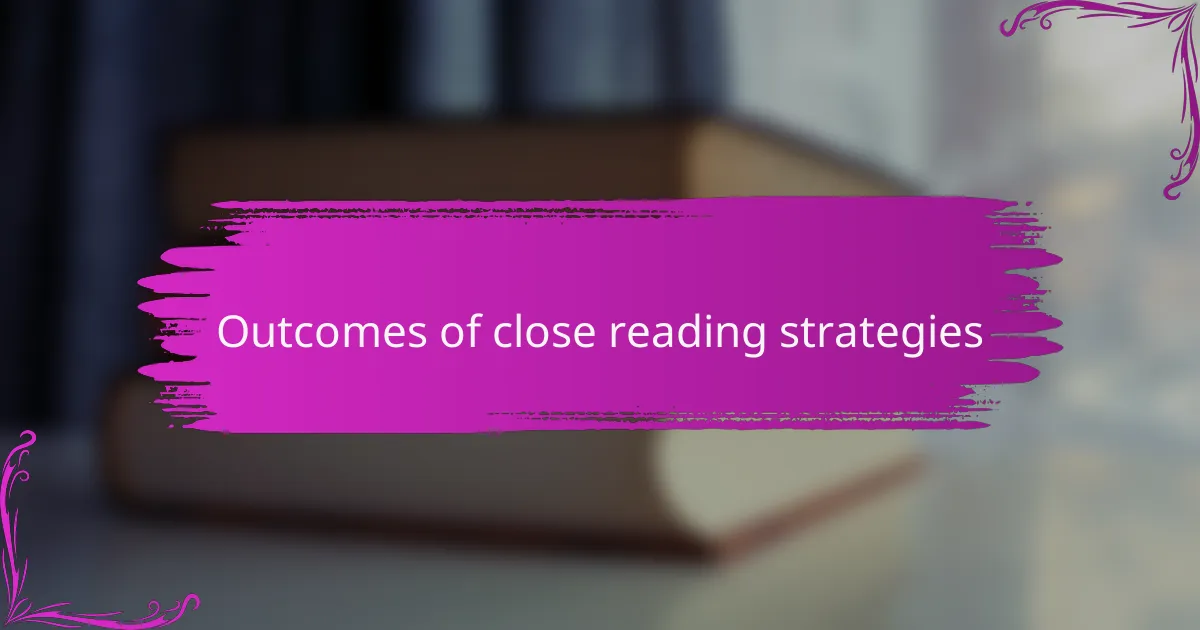
Outcomes of close reading strategies
Implementing close reading strategies yields numerous positive outcomes, both for students and educators. From my experience, students demonstrate enhanced comprehension skills as they engage deeply with the text, identifying nuances and themes that they might have overlooked during a casual reading. I’ve noticed that this practice not only boosts analytical thinking but also fosters a genuine love for literature, turning reluctant readers into enthusiastic learners.
In my classroom, discussions have become vibrant as students feel empowered to voice their interpretations and insights. One particular moment stands out: a student once shared a personal connection to a character’s struggle, illuminating the text’s relevance to their own life. It was inspiring to see how close reading not only enhanced critical thinking but also created a safe space for emotional expression and connection.
| Outcome | Description |
|---|---|
| Enhanced comprehension | Students grasp complex themes and nuances in the text. |
| Analytical thinking | Pupils develop skills to analyze and interpret diverse literature. |
| Increased engagement | Fosters discussion and personal connections to the material. |
